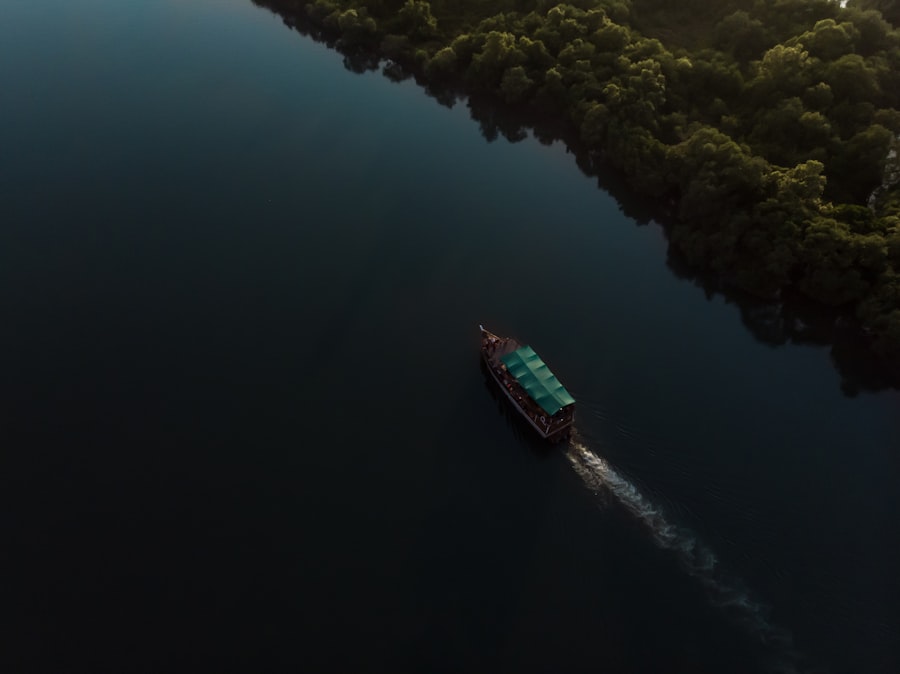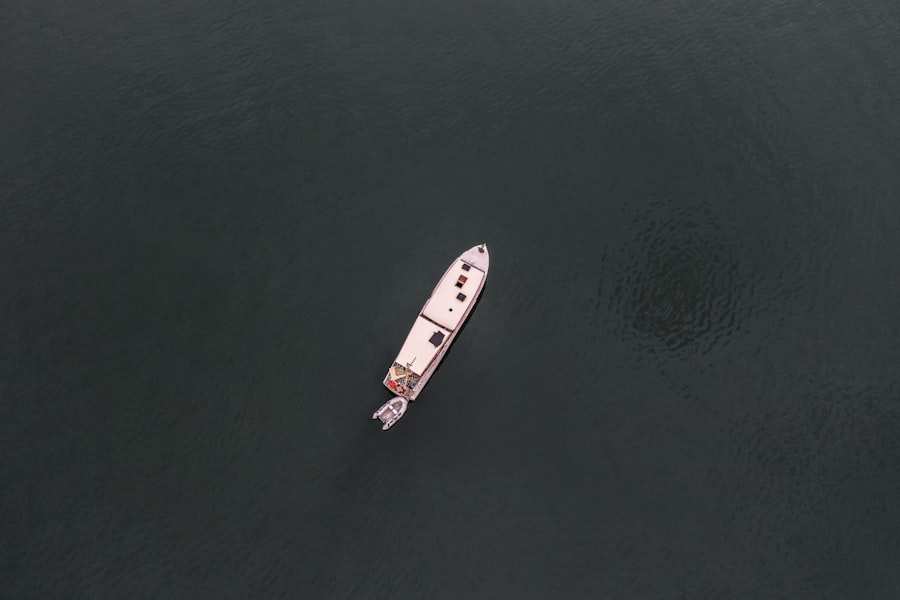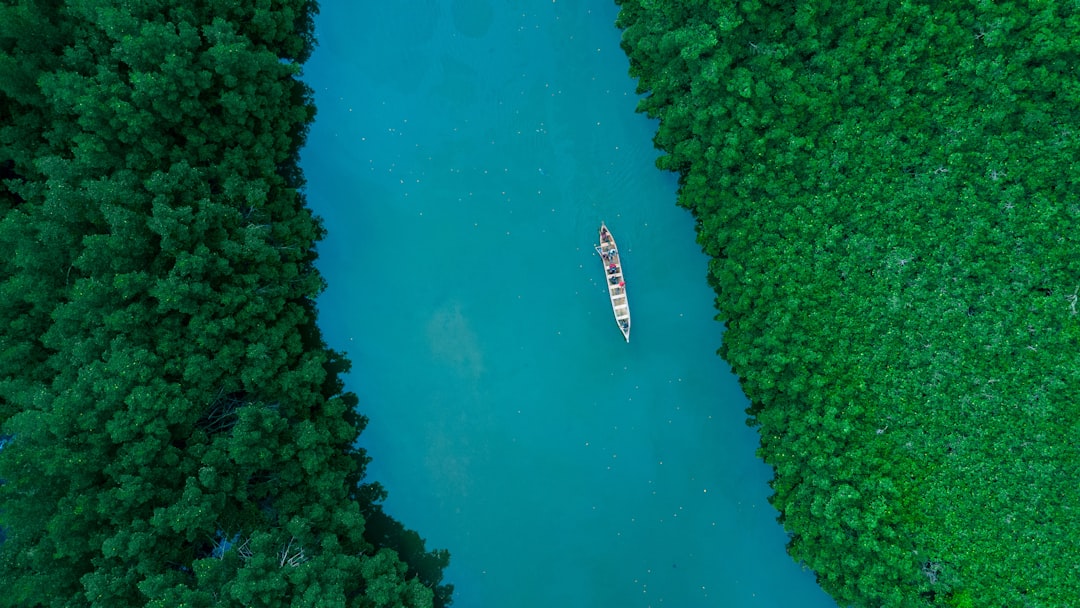The Panama Canal and the Drake Passage are two of the most significant maritime routes in the world, each playing a crucial role in global navigation and trade. The Panama Canal, an engineering marvel, connects the Atlantic and Pacific Oceans, allowing ships to avoid the lengthy and perilous journey around the southern tip of South America. In contrast, the Drake Passage, situated between Cape Horn and Antarctica, is known for its tumultuous waters and unpredictable weather, serving as a vital passage for vessels traveling to and from the Southern Ocean.
Together, these two waterways exemplify the challenges and triumphs of maritime navigation. Both the Panama Canal and the Drake Passage have become synonymous with adventure and exploration. The canal represents human ingenuity and determination, while the passage embodies the raw power of nature.
As global trade continues to expand, understanding these waterways’ historical significance, navigational challenges, and ecological impacts becomes increasingly important for mariners, traders, and environmentalists alike.
Key Takeaways
- The Panama Canal is a key waterway that connects the Atlantic and Pacific Oceans, while the Drake Passage is a treacherous sea route between South America and Antarctica.
- The construction of the Panama Canal began in 1881 and was completed in 1914, while the Drake Passage has a long history of being a challenging route for explorers and sailors.
- The Panama Canal and Drake Passage play a crucial role in global trade by providing a shortcut for ships and reducing travel time and costs.
- Navigating the Panama Canal involves passing through a series of locks and facing challenges such as strong currents and narrow passages, while the Drake Passage is known for its unpredictable weather and rough seas.
- The Panama Canal and Drake Passage are home to diverse wildlife and offer stunning natural beauty, making them popular destinations for eco-tourism and exploration.
History of the Panama Canal and Drake Passage
The history of the Panama Canal is a tale of ambition, innovation, and international cooperation. Construction began in the early 20th century under French leadership but was fraught with difficulties, including engineering challenges and rampant disease. After a decade of struggle, the project was abandoned.
However, the United States took over in 1904, implementing new techniques and health measures that ultimately led to its completion in 1914. The canal’s opening revolutionized maritime trade by significantly reducing travel time between the Atlantic and Pacific Oceans. Conversely, the Drake Passage has a history steeped in exploration and discovery.
Named after Sir Francis Drake, who navigated these waters in the late 16th century, this passage has long been a route for explorers seeking new lands and trade routes. Its treacherous conditions have made it both feared and respected among sailors. Over the centuries, it has witnessed countless voyages, from early explorers to modern-day adventurers, each leaving their mark on this formidable stretch of ocean.
Importance of the Panama Canal and Drake Passage for Global Trade

The Panama Canal is often hailed as a cornerstone of global trade due to its ability to facilitate faster shipping routes. By allowing vessels to traverse from one ocean to another without navigating around South America, it saves both time and fuel costs. This efficiency has made it an essential artery for international commerce, with thousands of ships passing through annually.
The canal’s strategic location has also made it a focal point for trade agreements and economic partnerships among nations. On the other hand, the Drake Passage serves as a critical route for shipping goods to and from Antarctica and other southern regions. While it may not be as heavily trafficked as the Panama Canal, its importance cannot be understated.
The passage is vital for research expeditions, tourism, and the transportation of goods to remote areas. As climate change alters shipping patterns and opens new routes in polar regions, the significance of the Drake Passage is likely to grow even further.
Navigating the Panama Canal: Process and Challenges
| Aspect | Details |
|---|---|
| Length of the Panama Canal | 50 miles |
| Number of locks | 3 sets of locks |
| Time to cross the canal | Average of 8-10 hours |
| Maximum size of vessels | Panamax size (965 feet long, 106 feet wide) |
| Challenges | Heavy rainfall, landslides, and seismic activity |
Navigating the Panama Canal is a complex process that requires careful planning and coordination. Ships must adhere to a strict schedule and follow designated transit times to ensure smooth passage through the canal’s locks. The journey typically takes around 8 to 10 hours, during which vessels are raised and lowered through a series of locks that manage the elevation change between sea level and Gatun Lake.
Pilots with extensive knowledge of the canal’s intricacies guide ships through this challenging route. However, navigating the canal is not without its challenges. The sheer size of modern container ships can pose difficulties in maneuvering through narrow channels and locks.
Additionally, weather conditions can impact visibility and safety during transit. The canal’s management continuously works to address these challenges by investing in infrastructure improvements and implementing advanced technologies to enhance navigation safety.
Navigating the Drake Passage: Weather and Navigation
The Drake Passage is notorious for its unpredictable weather patterns, which can change rapidly within a matter of hours. Sailors must be prepared for rough seas, strong winds, and sudden storms that can make navigation particularly treacherous. The passage is often characterized by large swells and turbulent waters, making it essential for mariners to have a thorough understanding of weather forecasting and sea conditions before embarking on a journey through this region.
Navigating the Drake Passage requires skillful seamanship and experience. Vessels must be equipped with advanced navigation systems to monitor their position relative to shifting currents and weather patterns. Many sailors opt for routes that take advantage of favorable winds or currents to minimize travel time and enhance safety.
Despite its challenges, successful navigation through the Drake Passage offers a sense of accomplishment for those who brave its waters.
Wildlife and Natural Beauty of the Panama Canal and Drake Passage

Both the Panama Canal and the Drake Passage are home to diverse ecosystems that showcase nature’s beauty. The canal’s surrounding rainforest is teeming with wildlife, including monkeys, sloths, toucans, and various species of reptiles. The lush landscape provides a stunning backdrop for vessels traversing this man-made wonder.
Efforts have been made to preserve these natural habitats while accommodating maritime traffic, highlighting the importance of balancing development with environmental conservation. In contrast, the Drake Passage offers breathtaking views of rugged coastlines and icy landscapes. It is a critical habitat for numerous marine species, including whales, seals, and seabirds.
The passage serves as a migratory route for various species, making it an essential area for biodiversity. For those fortunate enough to navigate these waters, encounters with wildlife can be awe-inspiring moments that underscore the connection between maritime navigation and nature.
Tips for Traveling through the Panama Canal and Drake Passage
Traveling through the Panama Canal requires careful preparation to ensure a smooth experience. It is advisable for vessels to book transit slots well in advance due to high demand. Additionally, understanding the canal’s regulations regarding size limitations and cargo restrictions is crucial for avoiding delays or complications during transit.
Engaging experienced pilots familiar with local conditions can also enhance safety and efficiency during navigation. For those venturing through the Drake Passage, preparation is equally important. Mariners should equip their vessels with appropriate safety gear and ensure they have reliable communication systems in place.
Monitoring weather forecasts closely is essential for anticipating changes in conditions that could impact navigation. Furthermore, travelers should be prepared for potential rough seas by securing cargo properly and ensuring crew members are trained in emergency procedures.
Environmental Impact of Navigating the Panama Canal and Drake Passage
The environmental impact of navigating both the Panama Canal and the Drake Passage is a topic of growing concern among environmentalists and maritime stakeholders alike. The construction of the canal significantly altered local ecosystems, leading to habitat loss for various species. While efforts have been made to mitigate these impacts through conservation initiatives, ongoing shipping traffic continues to pose challenges for maintaining ecological balance in the region.
Similarly, navigating the Drake Passage raises environmental considerations due to its sensitive marine ecosystems. Increased shipping traffic can lead to pollution from fuel spills or waste discharge, threatening marine life in this pristine area. As climate change alters oceanic conditions, there is an urgent need for sustainable practices in maritime navigation to protect these vital waterways from further degradation.
Famous Voyages through the Panama Canal and Drake Passage
Throughout history, both the Panama Canal and the Drake Passage have been witness to numerous famous voyages that have shaped maritime exploration. The canal has facilitated countless journeys by notable figures such as President Theodore Roosevelt during its inauguration in 1914. Additionally, many naval fleets have utilized this route during significant military operations throughout history.
The Drake Passage has also been home to legendary voyages by explorers like Ernest Shackleton during his ill-fated Antarctic expedition in 1914-1916. His remarkable journey through these treacherous waters has become synonymous with resilience and survival against overwhelming odds. These voyages serve as reminders of humanity’s enduring spirit of exploration amidst nature’s challenges.
Future Developments and Projects for the Panama Canal and Drake Passage
Looking ahead, both the Panama Canal and the Drake Passage are poised for future developments aimed at enhancing their roles in global trade while addressing environmental concerns. The Panama Canal Authority has initiated expansion projects to accommodate larger vessels known as “New Panamax” ships, which will further increase its capacity for international shipping traffic. In contrast, discussions surrounding sustainable practices in navigating the Drake Passage are gaining momentum as climate change continues to impact marine ecosystems.
Initiatives aimed at reducing carbon emissions from shipping vessels are being explored alongside efforts to establish protected marine areas within this vital passageway.
The Significance of the Panama Canal and Drake Passage for Maritime Navigation
In conclusion, both the Panama Canal and the Drake Passage hold immense significance for maritime navigation on a global scale. The canal stands as a testament to human ingenuity in overcoming geographical barriers while facilitating international trade. Meanwhile, the Drake Passage serves as a reminder of nature’s power and beauty amidst its challenges.
As global trade continues to evolve alongside environmental considerations, understanding these waterways’ historical context, navigational intricacies, ecological impacts, and future developments will be essential for ensuring their continued relevance in maritime navigation for generations to come.
While the Panama Canal offers a man-made shortcut connecting the Atlantic and Pacific Oceans, the Drake Passage is a natural sea route located between the southern tip of South America and Antarctica. For those interested in exploring more about these fascinating waterways and their geographical significance, a related article can be found on MyGeoQuest. This article delves into the historical and contemporary importance of these routes in global shipping. You can read more about it by visiting mygeoquest.
com/sample-page/’>this page.
WATCH NOW! Drake Passage: Earth’s Deadliest Waters Revealed
FAQs
What is the Panama Canal?
The Panama Canal is a man-made waterway that connects the Atlantic Ocean to the Pacific Ocean. It cuts across the Isthmus of Panama and allows ships to avoid the lengthy and hazardous trip around the southern tip of South America.
When was the Panama Canal built?
The construction of the Panama Canal began in 1904 by the United States and was completed in 1914. It was one of the most challenging engineering projects in history and involved the excavation of a large amount of earth and the creation of a system of locks to raise and lower ships as they pass through the canal.
What is the significance of the Panama Canal?
The Panama Canal has had a significant impact on global trade and shipping. It has greatly reduced the time and cost of transporting goods between the Atlantic and Pacific Oceans, and has had a major influence on international maritime trade routes.
What is the Drake Passage?
The Drake Passage is the body of water between the southern tip of South America and the northern tip of Antarctica. It is known for its rough seas and challenging sailing conditions, and is considered one of the most treacherous stretches of water in the world.
How does the Panama Canal relate to the Drake Passage?
The Panama Canal provides a crucial shortcut for ships traveling between the Atlantic and Pacific Oceans, allowing them to avoid the dangerous waters of the Drake Passage. This has had a significant impact on global shipping routes and has made trade between the two oceans much more efficient.
